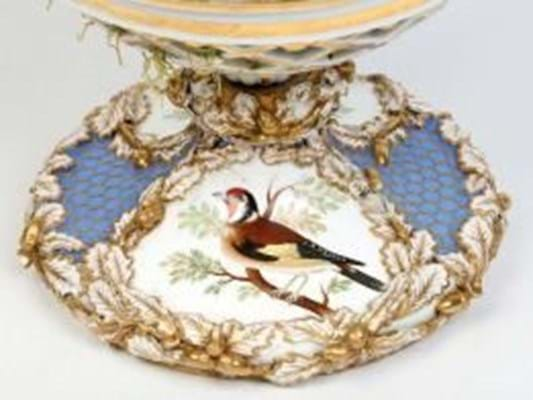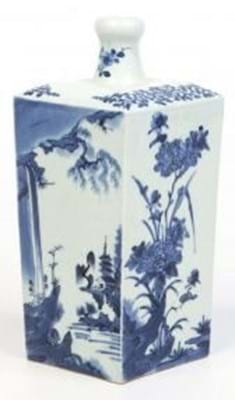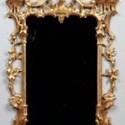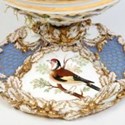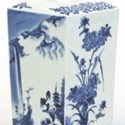It is an overused expression, and the prices at the 680-lot sale at Thurcroft near Rotherham were also on a scaled-down version of a major country house sale. But in terms of pulling power, interest, variety and the occasional surprise, Beighton’s simile stood up.
Almost all of the 200 lots from the cottage got away. They were led by a 4ft 3in (1.3m) tall, George III Chinese Chippendale giltwood pier mirror with period, if possibly not original, glass.
Estimated at £1000-1500, it sold at £4200 to a lady who had come to the packed saleroom solely to purchase it but, in true country-house-sale fashion, was also attracted by another lot, a pair of early 19th century pearlware Ralph Wood-type lions.
Each 9¼in (23.5cm) recumbent beast guarding a ball was decorated in coloured enamels. One was in good condition barring a hair crack to the ankle but the other was cracked across the tail, both rear paws had been broken and reglued and part of its base was missing.
Estimated at £800-1200, the pair went to the lady at £3000.
The sale attracted major interest from London dealers, two of whom battled it out for a late 17th-early 18th century portrait miniature of a European noblewoman wearing pearls and a ruff.
In a gold and silver mount set with rose cut diamonds, the 2 x 1¾in (5.5 x 4.5cm) miniature estimated at £1200-1800 sold over the phone at £4000.
The cottage owner was an enthusiastic collector of Rockingham produced near Rotherham at Swinton. From his collection 35 pieces were entered into this sale with a second tranche to be sold in November.
Rocky market
“Prices for Rockingham have fallen away since the 1980s,” said Beighton. “Many local people have already fairly full collections and we didn’t want to swamp the market.”
Top price was £750 for a c.1827- 30, 9½in (24cm) diameter plate painted with a named view, North End of Windermere.
Of more interest was a gaudy reconstruction of a comport from Rockingham’s Royal Service or Coronation Service – the 200-piece set commissioned by William IV in 1830 and finally completed in 1837, the year of his death. A triumph of ceramics art, it was a commercial disaster and was mainly responsible for Rockingham’s bankruptcy.
Pieces appear from time to time but this centrepiece had an associated c.1900 European basket topped with modern plastic fruit.
The c.1832-37, 7¼in (18.5cm) diameter base, however, was Rockingham, albeit an unmarked ‘waster’ the factory’s quality control had rejected.
Nevertheless, it had a value spotted by the vendor who bought it for a few pounds at an antiques fair and saw it sell to a collector above estimate at £400.
Among the surprises was, almost inevitably, a piece of Chinese porcelain, an 18th century 8in (20cm) tall ginger jar which went to a Chinese bidder in the room at £3000 – 10 times the lower estimate.
More unusually – although Beighton is not alone in marking a steady rise in prices for Japanese material – was the interest from two London dealers in an Edo period, possibly Arita, square tapering flask painted with karakusa scrolls and alternating panels of landscape and peonies.
The 9½in (24cm) flask was in good condition bar a short hair crack to the rim and Beighton and the vendor thought a £100-200 estimate was about right.
However, among the bidders was a London expert who was intrigued by the way the top slightly curled back over itself rather than have the usual straight, almost unfinished, look to it. Others apparently concurred that the flask was a rarity and it sold at £3400.



